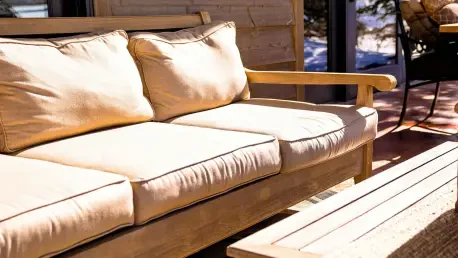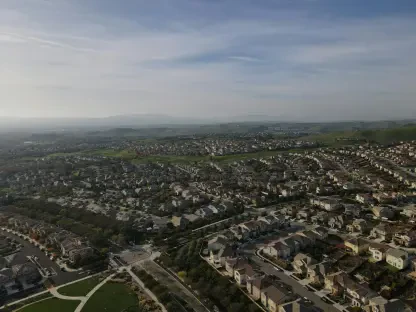In recent years, outdoor spaces have evolved into much more than just patios or backyards; they have become true extensions of indoor living areas, offering refuge, entertainment, and a space to connect with nature. As people seek to make the most of their homes, outdoor design has become a critical component in creating a harmonious living environment. The use of innovative and creative design elements is paving the way toward more integrated and aesthetically pleasing outdoor spaces that reflect broader lifestyle changes. These trends focus on blending natural elements with cutting-edge technology to create functional yet beautifully curated environments. They cater to a growing desire for outdoor spaces that not only provide beauty but also enhance quality of life in tangible ways.
Embracing Local Environment and Placemaking
A significant transformation in outdoor living spaces is the practice of placemaking, aiming to reflect the unique essence of the local environment. This trend has led homeowners and designers to use local materials and native plants to create gardens and yards that are deeply connected to their natural surroundings. Such spaces not only echo the natural beauty of their locales but also highlight cultural aspects unique to the area. Emphasizing indigenous landscapes allows for the creation of outdoor spaces that are distinctive and luxurious, offering a level of refinement that is both authentic and hard to replicate. This approach also fosters a sense of belonging and identity, creating an ambiance that resonates with the local community.
Moreover, the integration of native elements into outdoor design is linked with sustainability. By choosing materials and plants that are well adapted to the local climate, these spaces require less maintenance, water, and energy, aligning with broader ecological consciousness. This harmonious blend of luxury and sustainability not only creates tranquil environments but also encourages environmental stewardship. As a result, outdoor areas become a testament to the beauty and balance achievable when human interventions align with natural ecosystems. Engaging with the local environment helps foster resilience while promoting a sense of well-being and continuity within communities.
Technological Integration in Landscaping
As technology becomes increasingly intertwined with daily life, its influence is also expanding into landscape design, transforming how individuals experience their outdoor spaces. One of the key components of this transformation is the incorporation of smart lighting solutions. Advanced systems allow users to control lighting intensity and color with mobile apps or voice commands, offering adjustable ambiance that matches any mood or occasion. This technology adds a dynamic layer to outdoor environments, making them more versatile and adaptable to various needs and preferences. The ability to set the perfect lighting not only enhances aesthetic appeal but also increases safety and functionality.
In addition to lighting, outdoor audio systems have become essential in crafting immersive experiences. No longer limited to traditional speakers, modern setups can blend seamlessly within landscapes, delivering high-quality sound without detracting from the natural beauty of gardens or patios. Furthermore, integrated mosquito repellent systems represent a marriage of technology and comfort. These systems utilize natural compounds to provide effective and environmentally friendly pest control solutions. Together, these technological advancements contribute to creating outdoor spaces that are not only beautiful and inviting but also comfortable and functional, enhancing the overall living experience.
Creating Spa-like Outdoor Retreats
The growing trend of converting outdoor areas into spa-like sanctuaries underscores a shift towards prioritizing wellness and communal experiences. Instead of isolated indoor retreats, homeowners now embrace shared soothing environments equipped with features such as hot tubs, saunas, and cold plunge pools. This transformation reflects an increasing interest in social wellness practices, where gatherings are centered around relaxation and restorative activities. Such outdoor retreats offer a space for individuals to engage in contrast therapy, sharing in activities that refresh both the mind and body, thus transforming the backyard into a haven of tranquility and wellness.
These spa-inspired spaces provide a shift from traditional entertainment models to ones focused on health and togetherness. The idea is not only to look good but also to foster well-being and social interaction, creating a counter-narrative to the typical fast-paced lifestyle that emphasizes rest and relaxation. These elements draw from age-old European spa traditions of communal healing, offering a modern twist that has become a celebrated fixture in home design. This paradigm shift has seen outdoor spaces repurposed as focal points of comfort and luxury, inviting residents and guests alike to enjoy an environment that supports recovery and rejuvenation.
Eco-Friendly Design and Wildlife Gardens
An increasing awareness of ecological responsibility has brought about a notable trend in integrating wildlife and eco-friendly practices into landscape design. Homeowners and designers are dedicating portions of their landscapes to create habitats that encourage biodiversity, recognizing the importance of supporting local ecosystems. Features such as ponds and water gardens are being incorporated to attract wildlife, offering essential resources to birds, amphibians, and insects. These spaces act as mini-reserves, fostering a connection with nature while contributing to environmental sustainability, helping manage stormwater, and recharging aquifers.
Moreover, such eco-friendly designs afford homeowners the opportunity to make tangible positive impacts on their local environment while enhancing the beauty and functionality of their outdoor spaces. Encouraging diverse plant life and animals not only creates vibrant, dynamic gardens but also encourages educational and recreational engagement with the natural world. This shift towards sustainable landscaping reflects a broader trend of environmental mindfulness, where gardens serve as both a sanctuary for wildlife and a personal retreat for human inhabitants. By aligning landscaping goals with ecological principles, outdoor spaces transform into lush environments that support broader conservation efforts.
Curating Garden “Jewelry” for Character and Depth
Recently, outdoor spaces have undergone a transformation, evolving into much more than simple patios or backyards. They now serve as true extensions of indoor living, offering a sanctuary, a place for entertainment, and a venue to connect with nature. As homeowners strive to maximize the potential of their living environments, the design of outdoor areas has become an essential factor in creating a seamless and harmonious lifestyle. Innovative design elements are playing a pivotal role in shaping these spaces, making them more integrated and appealing. This evolution reflects broader lifestyle shifts and caters to the growing desire for outdoor spaces that are not only aesthetically pleasing but also enrich the quality of life in meaningful ways. By incorporating natural elements alongside advanced technology, these spaces offer a balance of functionality and beauty. They create an enriching atmosphere that resonates with many and promotes well-being, reflecting a deeper appreciation for the art of outdoor living.









